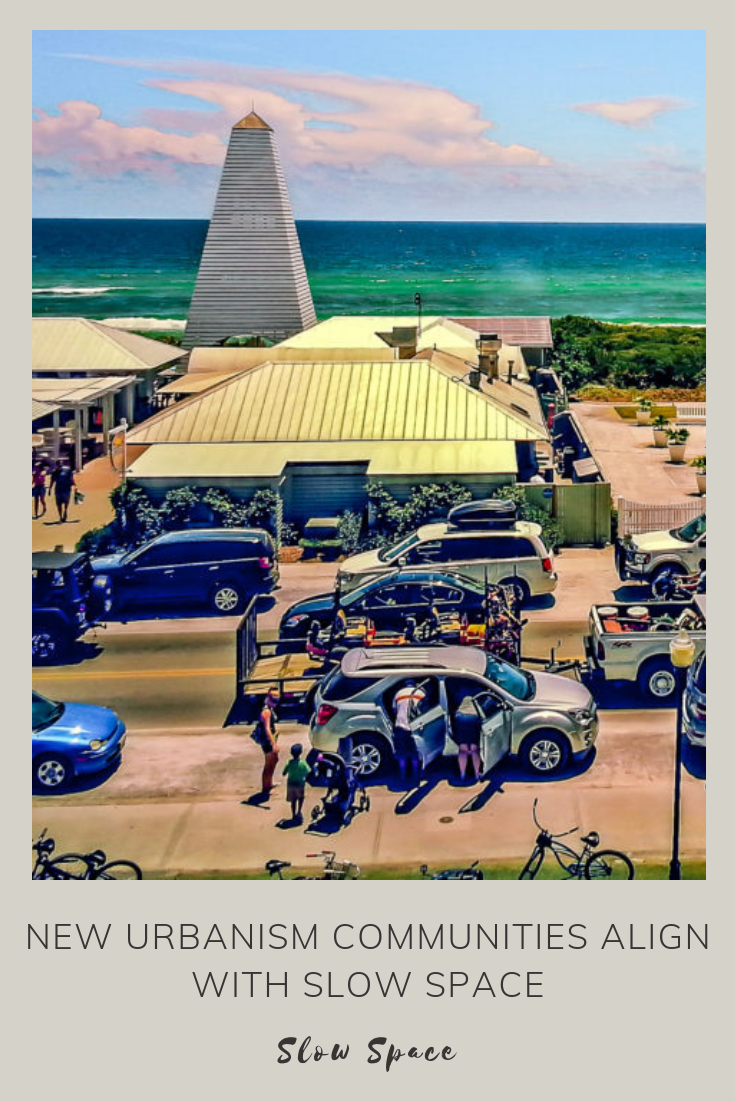Recently, I have been reflecting on a debate that I attended as a student at the Harvard Graduate School of Design in the 1990s. It was about New Urbanism, a human-scaled urban design development approach. The debate was between Rem Koolhaas, one of the world’s most important architectural thinkers, and Andres Duany, who co-founded the New Urbanism Movement and developed a community called Seaside, Florida based on its principles. As a devout modernist who considered Koolhaas’s book, SMLXL, to be my bible, I remember siding with Koolhaas. I thought that New Urbanism was nostalgic, idealistic and not relevant. I dismissed it completely. These days however, I keep pondering the similarities between New Urbanism and The Slow Space Movement.
Seaside, Florida is a private development on the Gulf Coast and is the best-known example of New Urbanism. It is a relatively small community incorporating residential buildings, mixed use buildings and public space. It is known for its pastel-colored houses featuring porches and white picket fences. Rem Koolhaas criticized New Urbanism, and Seaside in particular, as manufactured quaintness. It lacks the grit of a place that develops organically, as well as the diversity and intrigue of a real city.
I see his point, but when compared to most typical suburban developments, especially from the 1980s, with McMansions and no place to walk, New Urbanism developments are actually appealing. For example, in Seaside, everything is walkable and within easy reach. There is more vegetation than lawn and private outdoor space is intimate in size, encouraging residents to utilize communal outdoor spaces. In addition, the community includes a variety of sizes and building types. While they seem to mostly be vernacular in style, they aren’t identical, and in fact many different architects, such as Robert A.M. Stern and Deborah Berke, have designed homes there. Now, I have never been there myself, but from everything I have read and seen through images, it seems like a nice place to live or take a vacation, and slow down. In the 1999 debate, Alex Krieger asked Koolhaas if he had ever been there. His response: “Every year”. Was he joking?
Over the past 20 years, New Urbanism has accomplished more than just create quaint communities. It promotes walkability, green transportation, public spaces, quality architecture and mixed use neighborhoods, all values in line with the Slow Space Movement. These communities have also created change by developing projects that address low income housing, neglected urban spaces and improving suburbs.
The spaces where we live, work and visit have a huge impact on our lives, health and mood. It might be time to take a second look at New Urbanism in the context of The Slow Space Movement.
See also “Slow Space, Slow Cities” by Mette Aamodt.






